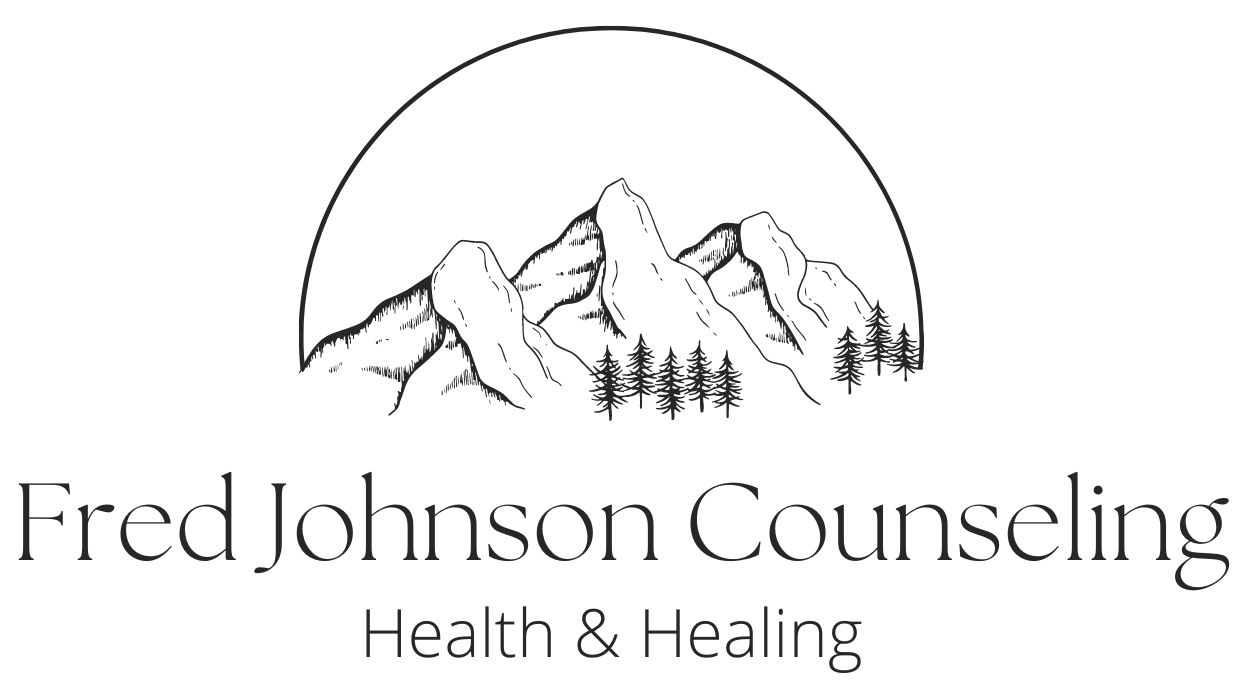Enduring Hard Times
Fred Johnson • August 1, 2024
Living Beyond the Stress.
Each year, on the first day of August, I remind myself that we are closer to the end of the month than ever before. Each day after, as sweltering humid heat swarms us here in the south, I am reminded that it is now one day closer to the sweet relief of fall temperatures. I’m not sure how I would fair, if by chance, I believed the rampant heat waves of August would never leave. Thankfully, I know seasons come and seasons go. The dreaded drudgery of a hellacious August will soon be gone. The expounding beauty of fall, with leaves changing and cool breezes blowing, will soon arrive.
Admittedly, this confession of seasonal distaste is a bit melodramatic. Yet, it serves as a practical example of what is known as “tolerable” stress and an adaptive coping response. Types of stress vary, but the three main categories are “good/positive”, “tolerable”, and “toxic” (1). These categories are not concrete or strictly defined by rules and circumstance necessarily. What is “good” stress for one person, may be “toxic” for another. Throughout our lives, the same stressors can change categories multiple times. Stress levels depend on the degree to which a person perceives control over a stressor or situation and whether they have support systems or resources in place to handle the stressor over their lifespan (2). A flat tire one day may be nothing other than a slight inconvenience. Yet on another day, it may represent all the uncontrollable forces keeping you from arriving on time to an important job interview.
An easier way of saying all of this is, when we lose our sense of being (ability to control or make decisions) to a circumstance, we are a susceptible to toxic stress. This is where endurance comes in. I would love to say there is short and simple method to reduce and mitigate all toxic stress in our lives. Unfortunately, this just isn’t so. It doesn’t need to be. Because life, people, the world we live in, are all super complicated. What is important and hopeful: the effects of chronic/toxic stress in the brain and body are responsive to recovery and healing.
Let’s talk about endurance as a helper for stress. Endurance, or the ability to withstand hardship or adversity, can be a simple, but effective tool to transition from toxic stress to tolerable stress. Enduring is a mindset of “thriving despite”. Thriving despite the terrible. Living beyond the hurt or difficulty. Healing to be able to accept good again.
The difference in the stress types is significant. Remember that our perception plays a major role in which is which.
- Positive/good stress: normal life challenges such as receiving a promotion, learning a new skill, exercise, or having a child. Here we are allowed goals, enjoy success, and try new things. Choice remains in these.
- Tolerable stress is usually non-normative. Examples are loss of a loved one, serious illness, or natural disasters. There is a sense of unfairness in this. Often the choice to feel good is removed or feels wrong to do so. Our choice is questioned here.
- Toxic stress is typical adverse and inappropriate. Over time it can carry heavy physical and psychological consequences. All of life is darkened by this. Seeing good is tinted by what we have been through or currently in. We usually feel there is no choice in these. Abuse, intimate partner violence,
Determining in our mind, to endure, withstand, and survive a critically difficult situation can move us from toxic stress to the tolerable type, then eventually the good type of stress. Living to allow good again.
If ever there was a sentence that embodied the old phrase, “easier said than done” ---- that one was it.
Tragically, it seems toxic stress only makes us good at surviving trauma or the terrible. It limits our ability to enjoy or even to see the beauty in a moment. The healing process allows us to be more human than before toxic stress skewed our view of the world. Talking with a counselor can be a critical part of healing. I hope that perhaps today in reading this, you’ve found a tool to help enduring despite what you’re up against.
Notes:
1. https://center.uoregon.edu/StartingStrong/uploads/STARTINGSTRONG2016/HANDOUTS/KEY_49962/TypesofStress.pdf
2. https://www.ncbi.nlm.nih.gov/pmc/articles/PMC2864527/

Most of us don’t want to admit it, but the arrival of October signals the official start to the holiday season. Within the next 91 days, there will be everything from spooky lanterns, stuffed turkeys, and sales catalogues arriving in the mail or inbox on the regular. Parties to attend, events to support, and special “once a year” gatherings will all demand our focus and presence. One thing is for certain, If you’re of adult age with even a mild case of responsibility, you will begin to experience what I call, “Holiday Time-Slippage.” Holiday Time-Slippage is the phenomenon wherein the busier and faster our lives become during the holidays, the less time we have to enjoy the holidays. In trying to do it all, we miss all that we do. Ok, I’ll admit I made that up. I even googled it to see if it was a thing. It’s not. Perhaps I just made it a thing, but more likely it is just a fun play on words that ends with this blog post. In either case, I think it’s important to be mindful of the changing of the seasons and what those signals for many. The 16th century produced a carol of Welsh origin we now know as “Deck the Halls.” Within the lyrics, the phrase “‘Tis the season” has become a popular connotation of the holidays in general. Sometimes we use it as a greeting, coping phrase, or in an excusing manner, because after all, “’Tis the season, right?” What we miss in doing so, is the instructive reply the original lyric provides: “… to be jolly.” To experience a cheerful and happy time. In talking with people daily about their lives, I am reminded that not everyone enters this season with the hope of joy and jolly nature. Life can be hard. Holidays can bring triggers, those sharp painful reminders. The holiday seasons can be an extremely isolating time for many. We need the care of each other in these times. We need connection. We need people in our life who will laugh and love, who will share a moment. Maybe you are the person able to provide that for another. Maybe you’re the person who needs that. If I can remind and encourage you today, that in all your seasons upcoming, allow time to simply be jolly.

I am a fan of positive imagination. Take a moment to consider this: How much time and effort do you spend in negative imagination (aka: anxiety) vs conceptualizing, visualizing, or simply imagining a positive outcome from the stressors or challenges in your life? Let’s discuss ways to build better thinking habits that contribute to our wellbeing. Developmentally, we are expected and encouraged to imagine things from an early age. It comes naturally. No one thinks of it as a bad sign of development or neurotic behavior. My favorite quote on this is by Albert Einstein: “The true sign of intelligence is not knowledge, but imagination.” He wasn’t wrong either. There have been many studies on the role of imagination in development and as predictor of cognitive abilities or even future success in children as adults. One thing I’ve noticed in these types of studies is: imagination almost always shows positive results! I can’t remember reading a study where imaginative play amongst kids indicates poor development or long-term problematic outcomes. Imaginative thinking helps us go beyond the present problem’s possibilities and explore the endless resolutions not currently apparent. Doing so encourages helpful and positive emotional affect. Yet, in the developmental years, it is not long before we as teenagers and young adults begin to hear things like, “Get your head out of the clouds” or “Stop pretending” or even “Think seriously for a minute.” Whether we want to admit it or not, most adults have transitioned from positive imaginative thinking to a form of negative imaginative thinking called, anxiety. Anxiety is truly the imagination predicting things and playing out the outcome of those bad things. So I return to my original question: How much time do you spend imagining the worst outcomes or negative situations verses a positive and hopeful future? If the answer is weighted more towards negative, let me give you some tools to try to help your thinking habits. 1. Split the Difference. Anytime you catch yourself thinking through how something will turn out badly, stop and begin imagining an opposite, positive resolution. Even if at first, the possibility you’ve imagined seems fantastical, continue on for equal effort and time. Try to at first spend at least 50/50 on negative vs positive imagination. You will find quickly that if you have trouble imagining the positive, it will take more time away from anxiety. 2. Find New Solutions. How often do you attempt to solve the same old problems and stressors with the same old solutions? Many times we do insanity by not stepping out of our grounded way of thinking. The next time you run into a problem you’ve been in before, try stopping and using your imagination for 5 minutes. Perhaps this will feel silly at first, but there’s a good chance your own brain, uninhibited by normal expectations, can create a new approach! 3. Read Fiction Books Reading, especially fiction, can stretch our imagination and even reintroduce us to the habit of thought. I will admit that I read a lot of non-fiction material and every so often need to stop and just read for fun! Aside from activating our imagination, reading can also free our mind from the present problem, which can bring new insights. 4. Visualize If “thinking” is your typical way of dealing with things, might I suggest you try a new approach? Create a flow chart, draw a picture that represents your situation, use colors, or even just simply doodle to introduce imagination and possibly better organize solutions. I hope in reading this, you’ve been inspired to try a new way of dealing with problems! At the very least, challenged to reduce how often you practice imagining the worst outcomes. Either way, take a moment today to imagine what good may happen!

